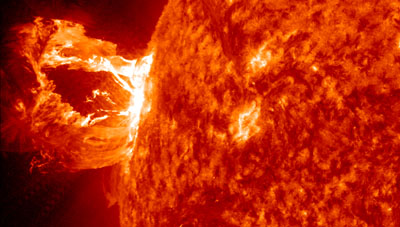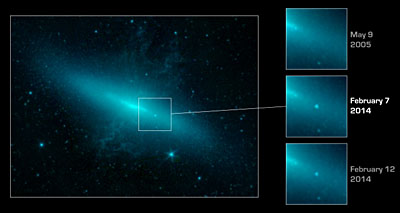Who Should Attend: Museum & Planetarium Staff
What to Expect:
What to Expect:
- A better understanding of the BIG Picture of cosmology
- To meet and talk with researchers at the forefronts
- To visit the Adler Planetarium & Astronomy Museum to see innovative ways to bring current cosmology into a museum
- Practicum sessions that will allow you test drive programming ideas developed during the course
- Tools and resources to bring forefront research into your home institution
Lecture Topics and Lecturers
- Lecture: 0 - Welcome, Randall H. Landsberg
- Lecture: 1 - Overview, Michael S. Turner
- Lecture: 2 - Exploding Stars, Donald Q. Lamb
- Lecture: 3 - Exoplanets in Motion, Daniel Fabrycky
- Lecture: 4 - Galaxies Evolving, Richard G. Kron
- Lecture: 5 - Gravity Shapes the Universe: Large Scale Structure, Joshua A. Frieman
- Lecture: 6 - Origin and Destiny of the Universe, Elise Jennings & Christopher Sheehy
- Lecture: 7 - Wrap Up, Michael S. Turner
Course Instructors
| Daniel Fabrycky University of Chicago | Joshua Frieman KICP | Elise Jennings (Director) KICP |
| Richard Kron University of Chicago | Donald Lamb University of Chicago | Randall Landsberg (Director) KICP |
| Christopher Sheehy (Director) KICP | Mark SubbaRao Adler Planetarium & Astronomy Museum | Michael Turner (Director) KICP |
Course Description
| The heavens fixed no more. Discoveries made over the past decade have revealed that the Universe and objects within are changing on timescales from shorter than a microsecond to longer than a billion years. From our own solar system and other planetary systems to stars, galaxies and clusters of galaxies astronomers are chronicling an evolving and evermore interesting universe with their sophisticated instruments. |
Though astronomers since antiquity have realized that new objects sometimes appear in the night sky, they considered the cosmos to be timeless and unchanging. Even as recently as the 1920s, astrophysicists had difficulty comprehending a universe that was not eternal. Now we know differently. Change is the rule. Planets form and orbit other stars; stars explode in violent supernovas; galaxies and black holes merge; and the Big Bang set it all in motion.
Astronomers now regularly witness many of these phenomena -- fleets of space satellites and ground based telescopes monitor the sky in real time, detecting transient events like solar flares, gamma ray bursts and supernovae within hours. Telescopes in Antarctica are mapping the spacetime ripples from the Big Bang, the Universe's most dramatic period of evolution. These events let us observe new physics in extreme conditions which are only ever reproduced on Earth in massive computer simulations revealing how galaxies collide and stars explode.




